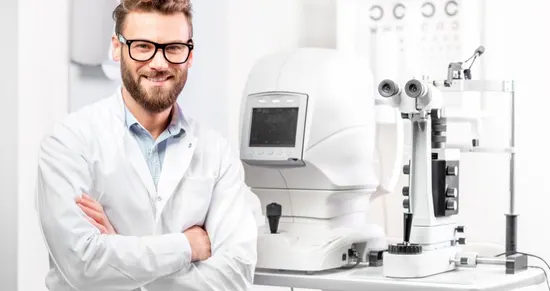For medical device manufacturers, particularly those involved with In Vitro Diagnostics (IVDs), complying with the EU’s In Vitro Diagnostic Regulation (IVDR) is a regulatory requirement and essential for patient safety and market access. A key part of this compliance is the IVDR performance evaluation report (PER), which documents a device’s scientific validity, analytical performance, and clinical performance.
According to the European Commission, over 70% of clinical decisions rely on IVDs, making the accuracy and safety of these devices non-negotiable. That’s why the performance evaluation report IVDR compliance process is a cornerstone of market approval in the EU.
At Maven, we help manufacturers create, manage, and update these critical documents so they meet regulatory standards, without the guesswork.
What Is the IVDR Performance Evaluation Report?
A performance evaluation report for an in vitro diagnostic device outlines how an in vitro diagnostic product performs against intended use criteria. Under IVDR (EU 2017/746), manufacturers must demonstrate that their IVD products are both safe and effective.
The PER is part of the broader performance evaluation of in vitro diagnostic medical devices, which includes three core elements:
- Scientific validity: The relationship between a biomarker and a clinical condition.
- Analytical performance: The accuracy, sensitivity, and reproducibility of the test.
- Clinical performance: The ability of the test to yield results associated with the target condition.
What Does the EU IVDR Require in a PER?
The IVDR sets strict standards for documentation, and the IVD performance evaluation must reflect ongoing evidence and updates. Article 56 and Annex XIII of the CE-IVDR 2017/746 legislation define the requirements for the PER.
In essence, your IVDR performance evaluation report must:
- Justify the intended use
- Provide evidence from peer-reviewed literature and clinical studies
- Demonstrate the analytical and clinical performance evaluation of an IVD
- Include a detailed risk-benefit analysis
- Cover the full product lifecycle, from design to post-market surveillance
Why Manufacturers Must Take the PER Seriously
Failing to produce a compliant PER can prevent your device from reaching the EU market. According to MedTech Europe, only 12% of IVD devices had completed IVDR certification, leaving many manufacturers scrambling.
The PER is not a “tick-the-box” task. It’s an ongoing document that shows regulators that your device performs as promised and the patient’s health is not at risk. Poor documentation or outdated evaluations can trigger rejections or recalls, both costly setbacks.
Step-by-Step Breakdown: How to Build a PER
The IVDR performance evaluation report requires a structured and well-documented approach. Here’s a general breakdown of the essential steps involved:
- Define Intended Purpose: Clearly state what the device does, the target population, and the intended user. This step forms the foundation for the entire evaluation, ensuring all evidence is relevant to the device’s specific role.
- Collect Scientific Validity Data: Use peer-reviewed journals, white papers, and expert consensus to provide data that clearly demonstrates a well-established link between the measured parameter and its associated clinical condition.
- Check Common Specifications (CS): For High-risk devices, Common Specifications have been laid out, which pose critical testing requirements on IVD devices to ensure optimum performance. Check the Common Specifications laid out in the Commission Implementing Regulation (EU) 2022/1107 and identify the requirements applicable to your IVD device.
- Perform Analytical Testing: Include precision, sensitivity, specificity, and stability tests. Analytical performance must be demonstrated through reproducible data across multiple conditions and operators.
- Run Clinical Performance Studies: These demonstrate real-world diagnostic accuracy. Clinical studies should reflect the intended use population and setting, complying with ethical and regulatory standards.
- Document Risk-Benefit Analysis: Highlight benefits against potential harm. Authorities expect a transparent justification that the device’s benefits outweigh any residual risks.
- Summarize All Data in the PER: Include a clear rationale for the conclusions drawn. A well-organized IVDR performance evaluation report ties scientific, analytical, and clinical evidence together into a cohesive narrative.
Each of these steps ensures that the performance evaluation of in vitro diagnostic medical devices is evidence-based, thorough, and regulator-ready.
The Role of Clinical Research Organizations (CROs) in IVDR PER
Clinical Research Organizations play a vital role in compiling a performance evaluation report for IVDR. They assist in designing studies, collecting data, analyzing outcomes, and maintaining quality standards.
By partnering with CROs, manufacturers gain access to:
- Expert insights into European regulatory expectations
- Validated study designs
- Reliable patient recruitment and data monitoring
Maven helps to collaborate with experienced CROs to streamline this part of the IVD evaluation, ensuring you meet the documentation requirements efficiently.
Using a PER Template: Save Time, Stay Compliant
Templates can greatly reduce the burden of creating a performance evaluation report for medical devices from scratch. Standardized PER templates ensure all required sections are included and organized correctly, saving time and minimizing errors.
Maven provides validated PER templates based on IVDR Annex XIII, customized to different IVD classes. These templates help as follows:
- Align with the notified body’s expectations
- Reduce rework and reviewer queries
- Help small and mid-sized companies ramp up compliance faster
Keep It Updated: PER Is Not a One-Time Task
IVDR compliance isn’t a one-time effort. The IVD performance evaluation must be updated throughout the product’s lifecycle. Changes in technology, clinical data, or market usage can all impact the PER.
Manufacturers are expected to:
- Regularly review new clinical literature
- Conduct post-market performance follow-up (PMPF)
- Update their IVDR performance evaluation report accordingly
This ongoing vigilance ensures patient safety and helps your product remain on the market. According to the European Commission’s guidance, failing to keep the PER current may result in certificate withdrawal.
Do Legacy Devices Need a PEP and PER?
Yes. Even legacy devices that were compliant under the old IVDD (Directive 98/79/EC) must undergo a full IVD evaluation under the new IVDR. This includes a Performance Evaluation Plan (PEP) and a PER.
Legacy devices must:
- Demonstrate continued scientific validity
- Include up-to-date clinical evidence
- Adapt to new risk classification rules
Maven assists clients in converting existing documentation into IVDR-compliant files, reducing transition stress and ensuring continued market presence.
How Maven Supports IVDR Compliance Through Performance Evaluation
Maven helps medical device manufacturers build, maintain, and submit compliant performance evaluation report IVDR files with confidence. Here’s how:
- Regulatory Strategy: We define a PER roadmap tailored to your product class and intended use. We identify the performance evaluation studies applicable to your IVD device and any common specifications that apply.
- Gap Assessments: We review your existing documentation (IVDD or IVDR) and identify areas that require updates.
- Document Preparation: We prepare and update your performance evaluation of in vitro diagnostic medical devices as per the requirements stated in EU 2017/746.
- Collaboration with CROs: We assist and guide when it comes to clinical studies and gather evidence efficiently to comply with the Common Specifications.
- Ongoing Support: We help to keep your PER updated with the latest scientific and clinical data.
Whether you’re launching a new IVD or transitioning a legacy product, Maven ensures you stay compliant, prepared, and ahead of regulatory changes.
Conclusion
The IVDR performance evaluation report is a foundational requirement for IVD manufacturers aiming to sell their products in the European Union as per the IVDR. It reflects your commitment to patient safety, product quality, and regulatory transparency.
Maven acts as your strategic partner in creating a robust and compliant performance evaluation report for medical devices, providing the guidance, templates, and clinical insights needed to succeed.
Get in touch with Maven to take control of your IVD performance evaluation and ensure your device meets the highest regulatory standards, now and in the future.
References
1. Digitalization of IVD Kits and Instruments
2. Performance Evaluation Report (PER) IVDR
3. MedTech Europe Survey Report






